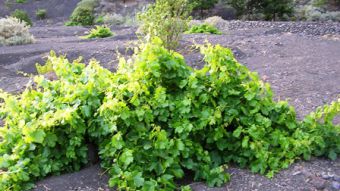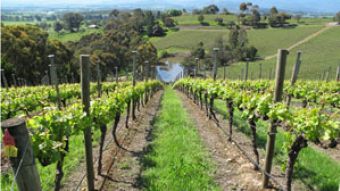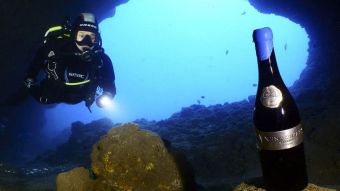Santorini: drama and beauty
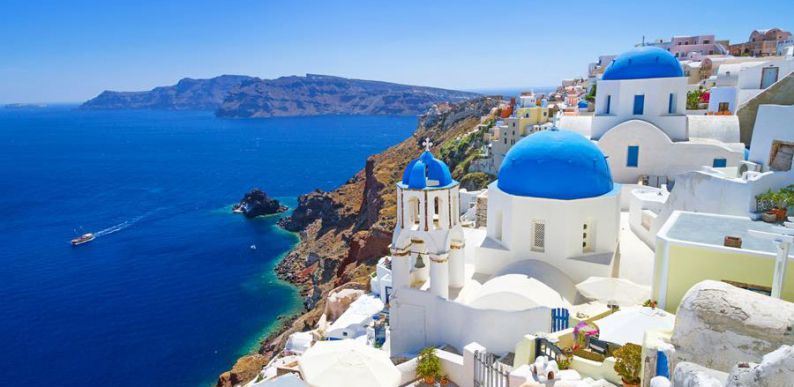
Nature can cause entire civilizations to vanish. One of the rare examples of the sudden end of a society to be recorded is that of the Minoan people. In 1650 BC the greater part of the island of Santorini disappeared in a tremendous volcanic explosion. The tidal wave which followed was so huge that it wiped out, amongst other things, the first palace at Knossos and the famous Labyrinth of the Minotaur in Crete, some hundreds of kilometres away.
Santorini, until then a circular island with a volcano at its centre, became a small archipelago formed from the volcano’s remaining sides, with an enormous salt lake in the middle. But, as every cloud has a silver lining, this development resulted in one of the greatest natural harbours in the world.
The island became an important Mediterranean commercial centre although lacking many products to export. Santorini is characterized by an almost desert-like climate, with scant rainfall and a long, hot, dry Summer. Strong winds can batter the islands for months at a time. As if this wasn’t enough, the volcanic soils of the archipelago offer very little in the way of fertility.
What better to cultivate then, than the vine, which can thrive where no other plant can. This being said, the harshness of the geography and climate make for challenging viticulture. Consider the problems besetting the early growers on the island, their vines stripped by the winds and burned by the sun, until they hit upon an ingenious system of cultivation perfectly adapted to the terrain.
In order to cope with the lack of water and poor, dry soil, vines are planted widely apart. Then there is the other great enemy, the drying wind, which, in combination with searing sunlight and no cloud cover, can be deadly.
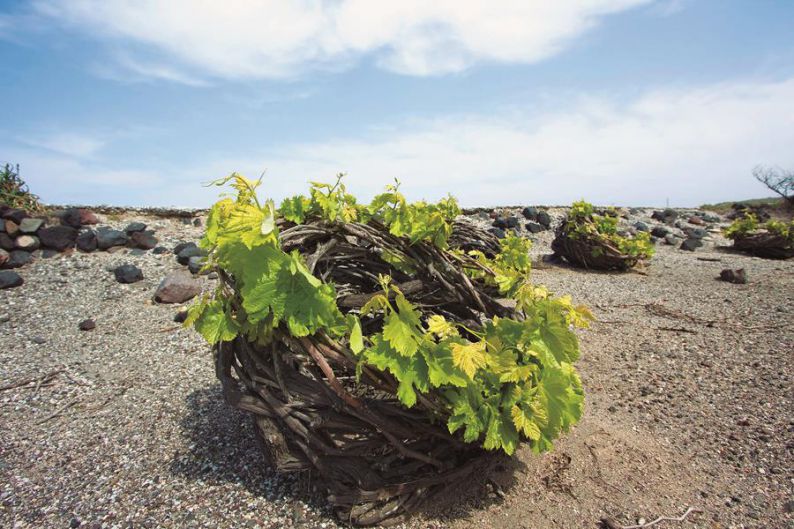
Faced with these conditions, the wine growers devised the basket method of pruning. Each year three shoots are woven into a basket shape so that the buds can be encouraged to face inwards. When the fruit sets, the clusters grow within the basket and are protected as much from the wind as the sun. The basket becomes thicker every year, thereby increasing its protection. The labour required by this system is enormous and mechanisation is impossible, yet the quality and character of the wines produced fully justify the effort.
Before describing the wines, mention should be made of grape varieties. Whilst Santorini has a considerable genetic heritage with a great number of both red and white grapes, it is the Assyrtiko which dominates the landscape.
It is another example of perfect adaption to the climate, with the capacity to thrive under stressful conditions such as those found on Santorini. When planted in more favourable locations, Assyrtiko loses its elegance and becomes overblown. However, on Santorini it produces wines with unique minerality, delicious crisp acidity, good length and depth and the ability to improve with age. It does not require a full growing season to give of its best. The harvest takes place at the end of July once perfect ripeness and maximum sugar levels have been obtained and before precious acidity is lost. Alcoholic strength is around a moderate 12%, which is something of a blessing nowadays.
My favourite expression of Assyrtiko is as a dry white without any ageing whatsoever but other styles are produced, including wines aged in barrels or on their lees. Occasionally, Assyrtiko is blended with other native varieties such as Aidani and Athiri with interesting results but lacking the wildness of the pure Assyrtiko wines.
Historically, the most important style of Assyrtiko was the Vinsanto, a wine made from sun-dried grapes aged in a number of different ways and which can be potent. This wine made the fortune of Santorini for centuries as the jewel in the crown of Byzantine and Venetian traders, before going on to delight the palates of the Russian aristocracy in the 20th century. The fall of Imperial Russia dealt a terrible blow to the island economy which only recovered with the advent of tourism and the recognition of its dry white wines.
There are only 13 producers on Santorini but all make noteworthy wines. My favourites are Thalassitis from Gaia, Estate Argyros, Assyrtiko de Mylos from Hatzidakis and the single vineyard wine from Koutsoyannopoulos among others. I recommend them for their quality and originality. If you do visit the island, you will also be able to soak up its beauty, understand its challenges and, like this writer, become a faithful admirer of these wines.


